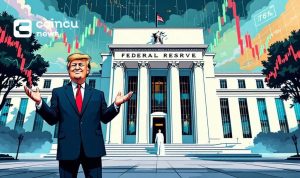A rug pull is a deceptive maneuver that occurs within the cryptocurrency industry, particularly in the decentralized finance (DeFi) ecosystem. It involves the creators of a crypto project abandoning it and running away with the funds invested by others. This fraudulent act is commonly seen on decentralized exchanges (DEXs) and can have severe consequences for unsuspecting investors.
In a typical rug pull scheme, malicious individuals create a token and list it on a DEX, often pairing it with a prominent cryptocurrency like Ethereum. They then use various tactics to gain the trust of investors, such as generating temporary excitement on social media platforms like Telegram and Twitter. They may also inject a significant amount of liquidity into their token’s pool to create the illusion of a thriving project.
Once investors start trading their Ethereum or other assets for the newly listed token, the creators of the token execute their plan. They withdraw all the funds from the liquidity pool, causing the token’s price to plummet to zero. This sudden drop in price leaves investors with worthless tokens and no way to recover their funds.
Rug pulls are more common on DEXs than centralized cryptocurrency exchanges due to the lack of listing fees or audits required. Creating tokens on open-source blockchain protocols like Ethereum is also a simple and cost-free process, making it easier for malicious actors to carry out rug pulls.
How can you protect yourself from Rug Pulls?
With the prevalence of rug pulls in the cryptocurrency industry, it is crucial for investors to be vigilant and take steps to protect themselves. Here are some strategies to consider:
What is Assessing Liquidity?
One important step in avoiding rug pulls is to assess the liquidity in a token’s pool. Decentralized exchanges like Uniswap determine token prices algorithmically based on the available balances in the pool. If a project lacks sufficient liquidity or has a small pool, it becomes easier for the creators to execute a rug pull.
Before investing in a token, it is advisable to check the liquidity of the token’s pool. If the liquidity is low or there are signs of irregularities, it may be best to avoid investing altogether.
What is Checking for Locks on Pooled Liquidity?
Reputable projects often implement a lock on their token’s pooled liquidity. This lock restricts the creators of the token from withdrawing funds for a specific period of time. Checking if a token’s pool has a lock can provide some assurance that the creators are committed to the project’s long-term success and are less likely to carry out a rug pull.
What is Identifying Warning Signs?
There are several warning signs that can indicate a potential rug pull:
- A sudden and massive price surge in a short period, such as going from 0 to 50X in just 24 hours, should raise red flags. This tactic is often used to create a fear of missing out (FOMO) and lure more people into investing in the token.
- If the development team holds a significant number of tokens, it increases the risk of a rug pull or exit scam. A project can be considered more trustworthy if the team does not hold a large portion of tokens.
- When the team renounces ownership of any tokens, including those acquired during a presale, it eliminates the risk of team-held tokens being exploited in a rug pull.
By paying attention to these warning signs and conducting thorough research, investors can reduce their chances of falling victim to a rug pull.
What is the conclusion?
Rug pulls are a prevalent issue in the cryptocurrency industry, particularly in the DeFi ecosystem. These fraudulent acts involve the creators of a project abandoning it and running away with investors’ funds. Understanding the tactics used in rug pulls, assessing liquidity, checking for locks on pooled liquidity, and identifying warning signs can help investors protect themselves from falling victim to these scams.
It is essential for individuals interested in investing in cryptocurrencies to conduct thorough research and exercise caution when entering the decentralized finance space. By staying informed and employing best practices, investors can mitigate the risks associated with rug pulls and make more informed investment decisions in the world of cryptocurrency.














